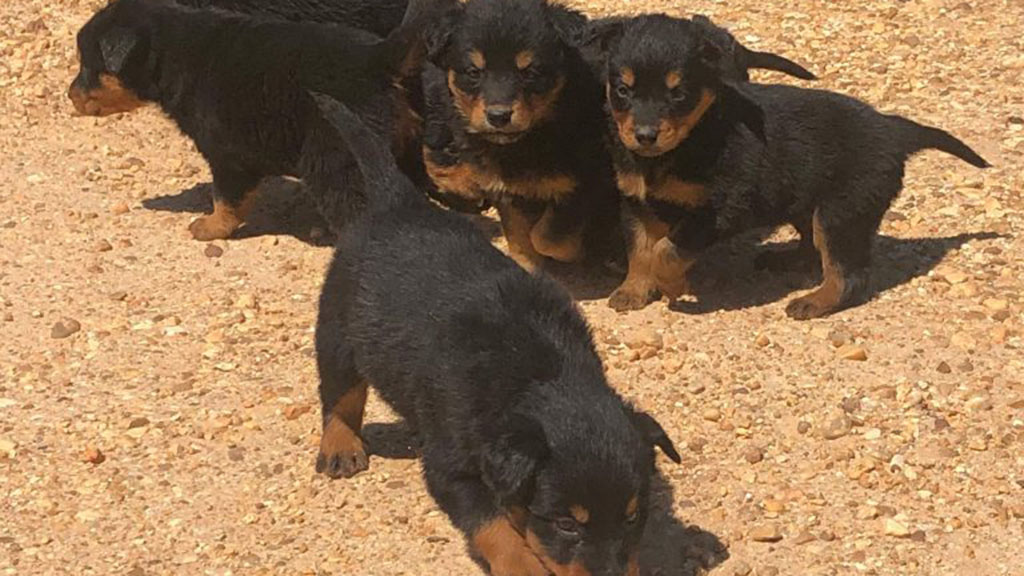
Animal Research Foundation Clock-Wise Breeding - A Critical Review
Re. Lewis, Karen. “Animal Research Foundation Clock-Wise Breeding.” Animal Research Magazine, Summer-Fall 1973
"Animal Research Foundation Clock-wise Breeding" (Lewis) discusses the breeding program established by the Animal Research Foundation, which involves a method called clock-wise breeding. The program, designed by Mr. Tom D. Stodghill, aims to keep the breed pure and retain the desirable qualities in dogs. The Clock-wise system was used pervasively by Stodghill and his ARF acolytes in establishing the now extant strain of Texas black and tan English shepherds. Indeed, Stodghill advocated this system for other breeds of dogs and several species of livestock.
The article explains the strategy of clock-wise breeding and emphasizes the importance of selecting unrelated females to each other and unrelated to the Hub Sire. This strategy aims to maintain a strong gene pool and allows breeders to know and study a pedigree to know which way to go.
In the first generation, the best male of Lady's litter (holding 50% of the female and 50% of the original Hub Sire) is selected. In the second generation, the best female of Judy's litter and the best male of Babe's litter are chosen, each holding 50% of Captain Shep.
The third generation involves taking the best male holding 25% of Lady and 25% of Angel and 50% of Captain Shep, and breeding him to the best female holding 25% of Judy, 25% of Babe, and 50% of Captain Shep. The result is a puppy holding 12 ½% of Lady, 12 ½% of Angel, 12 ½% of Judy, 12 ½% of Babe, and still 50% Captain Shep, maintaining the genes of the original Hub Sire.
In the fourth generation, puppies holding 12 ½% Sally, 12 ½% Dolly, 12 ½% Love, 12 ½% Kelly, and 50% Captain Shep are involved. The best male from this litter and the best female from the Judy x Shep litter are bred to produce the next generation.
The article concludes with an acknowledgment of the complexity of this breeding program, which requires a lot of planning and cooperation among breeders. Despite the challenges, the author asserts that if willing to help, the program can be spread out over the country with cooperation from other breeders, making it a very successful breeding program.
The "clock-wise breeding" program described in the article suggests a systematic approach to dog breeding that aims to maintain the desirable traits of a "Hub Sire" by breeding his offspring in a controlled manner over several generations. However, this breeding strategy may have several potential fallacies or criticisms from a genetic and ethical standpoint:
- Genetic Diversity Reduction: The program's design seems to focus on maintaining a high percentage of the original Hub Sire's genetics. While this could preserve certain desired traits, it could also lead to a reduction in genetic diversity, which is important for the health and vitality of any breed. Reduced genetic diversity can increase the risk of inherited health problems and potentially weaken the overall gene pool.
- Inbreeding Depression: By continuously breeding within a specific lineage to maintain the Hub Sire's traits, there's an increased risk of inbreeding depression, where recessive genes that carry disorders or undesirable traits become more prevalent.
- Artificial Selection Limitations: The clock-wise breeding method relies on artificial selection, choosing dogs for breeding based on specific traits. This process can overlook other important attributes like temperament, overall health, and adaptability, which might not be as easily quantifiable.
- Assumption of Desirable Traits: The program assumes that the traits of the Hub Sire are universally desirable and should be preserved. However, desirability is subjective and can change over time. What is considered a desirable trait in one era or region might not be favored in another.
- Ethical Concerns: The intense focus on maintaining specific bloodlines can raise ethical concerns about the welfare of the animals. It might lead to breeding practices that prioritize genetics over the well-being of individual dogs.
- Practicality and Predictability: The practicality of maintaining such a controlled breeding program over multiple generations can be questioned. Genetic inheritance is complex, and traits can be unpredictable. This method assumes a level of predictability that may not be realistic.
- Potential for Unintended Consequences: Selective breeding can sometimes lead to unintended consequences, such as the exaggeration of physical features that may be harmful to the dogs' health or well-being, simply because they are associated with the Hub Sire.
- Oversimplification of Genetics: The article simplifies genetic inheritance to percentages of the original Hub Sire’s traits being passed down. Genetics, however, is not purely additive in this way, and the manifestation of traits is influenced by a multitude of factors including dominant and recessive gene interactions, mutations, and environmental influences.
In conclusion, while the clock-wise breeding program presents a structured approach to breeding, it does not account for the complexities of genetic variability and the importance of maintaining genetic diversity. Additionally, the ethical and practical implications of such a program should be carefully considered. ▪